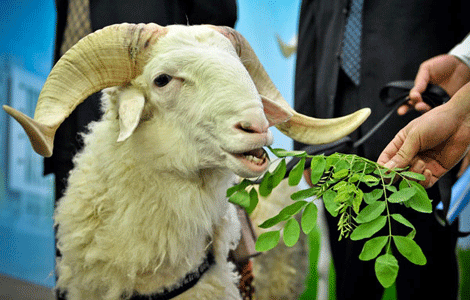
BEIJING - China's foreign trade is showing stronger signs of recovery, buoyed by upbeat demand from the United States and emerging markets.
Exports increased 21.8 percent year on year to $139.37 billion in February, while imports fell 15.2 percent to $124.12 billion, the General Administration of Customs (GAC) said Friday.
The trade surplus expanded to $15.2 billion from a deficit of $31.98 billion a year earlier.
The GAC said that after taking seasonal factors into account, such as February's Spring Festival holiday, exports rose 20.6 percent and imports climbed 6.5 percent.
Wang Jun, an economist at the China Center for International Economic Exchanges, attributed the better-than-expected exports to the steady recovery of the Chinese, US and emerging economies.
The less-robust imports were due to a stronger US dollar and falling prices for commodity goods. Importers also replenished inventories before Spring Festival, he said.
China's economic growth eased further to a 13-year low of 7.8 percent in 2012 from 9.3 percent in 2011 and 10.3 percent in 2010.
The government is targeting economic growth of 7.5 percent this year to leave room for economic restructuring.
It also hopes to increase its total foreign trade volume by around 8 percent amid a slow global economic recovery and rising trade protectionism.
A string of GAC indexes indicate that exporters and entrepreneurs are more optimistic about future trends than in previous months.
In the first two months, trade with the EU, China's largest trade partner, was up three percent, while that with the United States, its second-largest trade partner, rose 14.8 percent.
Trade with ASEAN (Association of Southeast Asian Nations) member countries increased 22 percent. Trade with Russia was up 31.6 percent and that with South Africa surged 61.4 percent.
Trade with Japan dwindled 8.2 percent.
General imports and exports,or 52 percent of the total trade, increased 11.5 percent.
The processing trade, which refers to activity related to importing raw materials and exporting finished goods, grew 7.6 percent and represented 33.2 percent of the total, or 2 percentage points lower than in the same period a year ago.
Imports of raw materials dropped, as fewer working days in February curtailed demand. In the first two months, imports of iron ore fell 1.5 percent to 120 million tonnes, while imports of crude oil decreased 2.4 percent to 45.93 million tonnes.
Analysts said a surprising jump in the trade surplus may renew outside pressure for China to appreciate its currency, as China has long been criticized for keeping its currency artificially cheap to gain unfair trade advantages.
On the sidelines of the ongoing annual session of China's political advisory body, Yi Gang, deputy governor of the People's Bank of China, the central bank, said Wednesday that the value of the yuan has been close to equilibrium, adding that its exchange rate will continue to be stable this year.
Chen Hufei, a researcher with the Bank of Communications, said that as China's economic recovery takes shape in the following months, imports are expected to grow faster than exports, indicating that the surplus for the whole year will be less than that of 2012.







